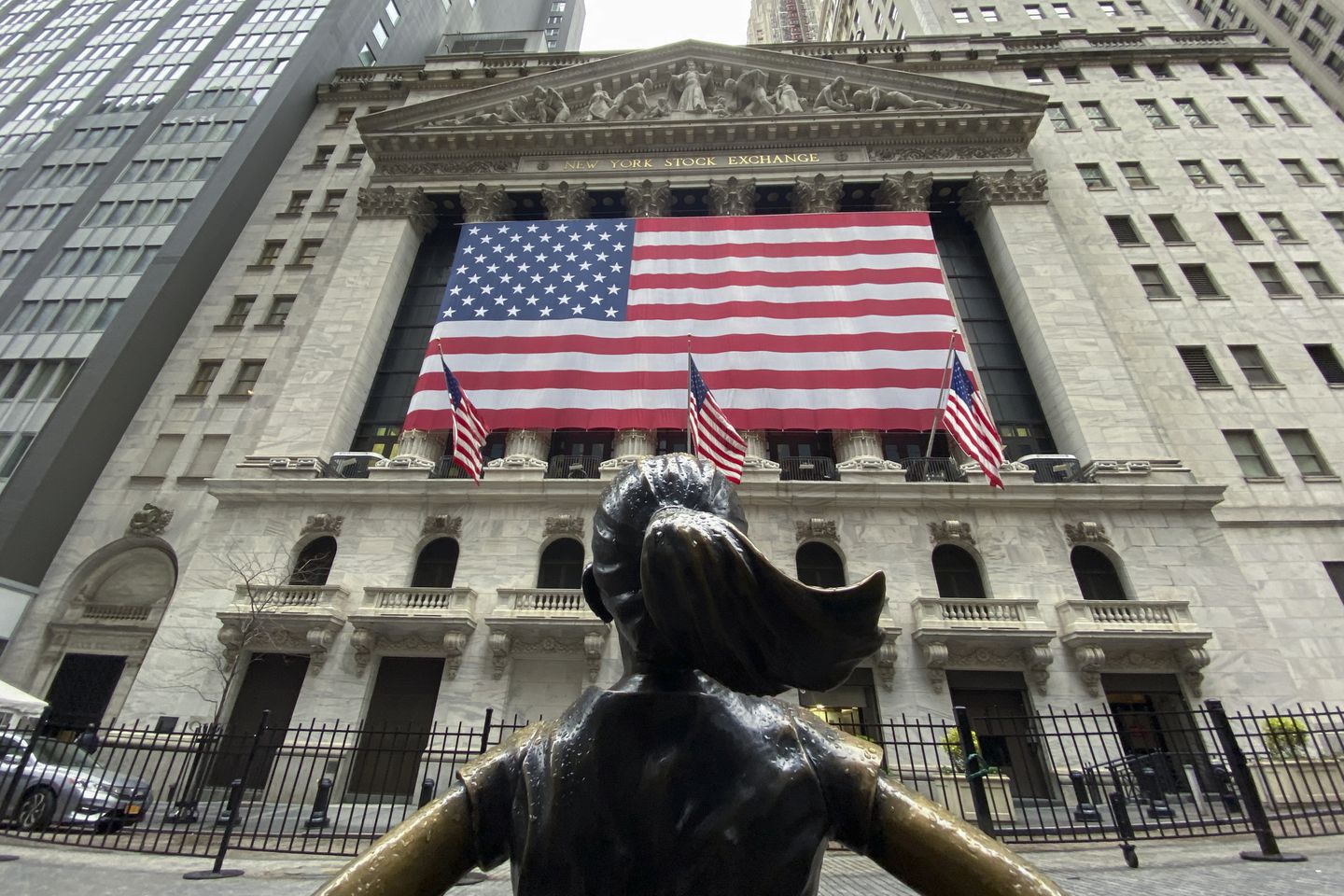

The Fed has been lauded for doing more for the broader Main Street economy during this pandemic-induced crisis than back in ’08-’09 when seen as mostly as Wall Street’s savior.
Source: Bloomberg
Federal Reserve Chair Jerome Powell and his colleagues had a hard decision to make as the coronavirus epidemic worsened in February and March. If they stuck to the standard policy of buying only highly rated bonds, they would likely be accused of favoring Wall Street over Main Street—the traditional rap on the Fed. If they got creative, they could help more sectors of the economy but they would almost certainly be accused of overreaching, picking winners and losers, rescuing the unworthy, and risking losses that would ultimately be borne by taxpayers.
They decided to get creative. More creative, in fact, than any Fed leaders since the birth of the central bank in 1913. They not only relaunched the special lending programs built for the 2008-09 financial crisis, but they invented entirely new ones to rescue both big and small businesses. Powell’s immediate predecessor, Janet Yellen, called the actions “rapid and enormous.” Ben Bernanke, who set the previous record for Fed activism, commended Powell while calling some of the newest measures “important and difficult.”
The Fed’s fire hose of lending hasn’t prevented a recession, but it’s protecting the financial system from seizing up. Fear was so rampant in the financial markets in early March that even some normally in-demand Treasury securities—such as certain slightly older issues of 10-year government notes— fell out of favor.
Now that the Fed is buying, investors have been more willing to buy as well. That’s pulled down interest rates for a wide range of debt, making it easier for borrowers to finance themselves and stay in business. And stocks have rebounded from their lows in late March. “They should be very proud of the way they have been able to return financial markets to a more normal situation,” says Torsten Slok, chief economist at Deutsche Bank Securities.
Powell portrays the Fed’s choice as no choice at all, but a necessity. It’s politically important for the central bank to be perceived as apolitical and technocratic, not a decision-maker akin to Congress or the White House. In an April 9 speech, he seemed to channel Winston Churchill, saying, “None of us has the luxury of choosing our challenges; fate and history provide them for us. Our job is to meet the tests we are presented.” He added, “At the Fed, we are doing all we can to help shepherd the economy through this difficult time.”
In fact, there was nothing preordained about the Fed’s course of action. The Powell who’s going all in on unprecedented rescue measures is a world apart from the Powell who pushed interest rates higher to forestall inflation and asset bubbles in 2018, his first year in office. That hawkish stance earned him the wrath and scorn of President Trump, who appointed him to the top job at the central bank. As recently as March 10, Trump was still complaining in a tweet about “Our pathetic, slow moving Federal Reserve, headed by Jay Powell.”
One clue to Powell’s decision to go big on keeping companies financially liquid is his background as a lawyer, investment banker, and private equity investor. Although he’s the first Fed chair since the 1970s not to have economics training, he understands markets and corporate finance better than most of the Ph.D.s at Fed headquarters on Constitution Avenue in Washington. He was quick to see that lowering interest rates alone wouldn’t solve the problems popping up as the economy went into lockdown with the COVID-19 outbreak.
Conventional monetary policy reached its limit when the Fed lowered the federal funds rate target by 1.5 percentage points in March, to a range of zero to 0.25%. The actions since then, reaching into the bowels of the financial system to help companies of all sizes borrow, are right up Powell’s alley, says Michael Feroli, chief economist of JPMorgan Chase & Co. “That’s business,” he says. “That’s knowing how financial markets work.”
The Fed’s next step after the federal funds rate hit the floor and conventional bond-buying was cranked up was to ask for permission from the Treasury Department to expand the range of eligible borrowers on an emergency basis. Section 13(3) of the Federal Reserve Act, enacted during the Depression, gives the Fed the authority to lend to the private sector and state and local governments—though still only against high-quality collateral—under “unusual and exigent circumstances.” With the department’s OK, the Fed trundled out the special lending vehicles that were developed for the financial crisis. Their reappearance restored investors’ confidence in sectors of finance that are invisible to the general public but crucial to Big Business, including commercial paper and repo lending.
But the toolkit developed under Bernanke wasn’t enough—because in contrast to 2008-09, when the financial system froze up, this time almost the entire economy is on ice. For the first time, the Fed is buying bonds from and making loans directly to companies. It’s also buying municipal debt; rolling out the Main Street Lending Program for companies with fewer than 10,000 employees; and backing the Small Business Administration’s Paycheck Protection Program, which is for companies with fewer than 500 employees. Reaching beyond Big Business is good for the economy as well as advantageous for the Fed, which has been criticized in the past for helping Wall Street more than Main Street.
This time the central bank may be accused of creating problems for the economy and itself by straying from macroeconomic policy. Some of its new lending makes the Fed essentially an agent of the Treasury Department, raising questions about its independence. Under the Dodd-Frank Act the Fed is prohibited from making lending decisions about individual companies, but that hasn’t stopped critics from accusing it of micromanagement. “This is fiscal policy, picking winners and losers,” says Mark Spindel.
There are already complaints that the Fed is rewarding foolish risk-taking by bailing out overindebted companies. A popular GIF portrays a crazed Powell at a lectern shooting out a cloud of dollar bills from a machine-gun-like printing press. “I’ve gotten comments from clients who are worried about the precedent the Fed is setting,” says Kathleen Bostjancic, chief U.S. financial economist at Oxford Economics. She’s not: “I would give Powell an A-plus,” she says.
The Fed isn’t supposed to lose money on its lending, which is why it ordinarily sticks to investing in ultrasafe Treasury bonds and government-guaranteed mortgage-backed securities. The gambit that allows the Fed to lend to weaker borrowers is a guarantee from the Treasury Department to absorb losses. A fifth of the money in the $2.2 trillion Coronavirus Aid, Relief, and Economic Security Act—$454 billion—is earmarked for such lending. The Treasury Department is beginning to put that startup money into a range of special-purpose vehicles that make loans. The Fed amplifies the vehicles’ lending capacity eight- to tenfold by lending money to them. The department will swallow the losses if the borrowers don’t repay.
However, the Fed will start to lose money if the losses exceed the amount the Treasury Department puts in. “Given how fast our thinking about the virus is evolving, we have to be open to that possibility—that things could be much worse than the Fed staff forecast,” says JPMorgan Chase’s Feroli. In the worst case, the Fed might have to go to Congress to ask for more money, which would be a blow to its independence.
Powell is likely to be criticized by some for doing too little and by others for doing too much, just as Bernanke was a bit more than a decade ago; no one can know for sure because there’s only one economy to experiment on.
It’s head-spinning that Powell has gone from Trump’s bête noire to the one person most likely to help the president gain a second term. Trump acknowledged the debt on March 23, saying, “I called him today, and I said, ‘Jerome, good job.’ ” However, he added, “He was a little bit slower than what I’d have liked.” Powell also has support from Democrats in Congress, who appreciate his responsiveness to their questions during the Fed chair’s semi-annual testimony, as well as his impassiveness in the face of Trump’s insults and demands for easy money. There’s no sense that Powell is working for the president’s re-election. “People realize he’s not Trump’s errand boy,” says Feroli.
Bernanke, a student of the bank failures of the Great Depression, was the right person to lead the Fed through the financial crisis. Yellen, a labor economist, was well-placed to chair it during the slow recovery. Now it’s Powell’s chance to show whether a former investment banker can sustain business through a pandemic-induced economic deep freeze. So far, he’s made some fans.


